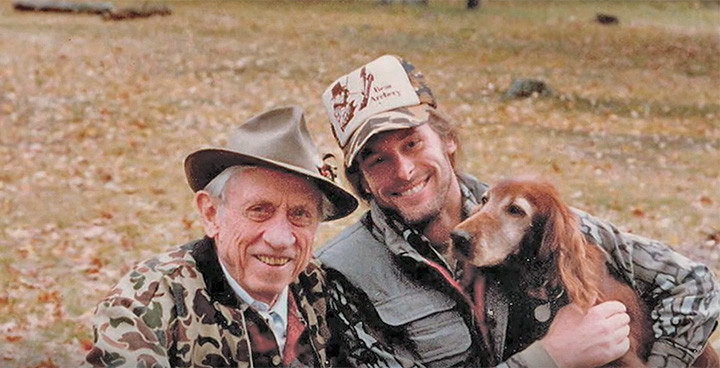In households deeply connected to the hunting tradition, the name Fred Bear resonates with profound respect. While Fred Bear himself passed away in 1988, that year also marked the genesis of something extraordinary that would amplify his legacy perhaps more than anything else: the iconic “Fred Bear Song” by rock legend Ted Nugent.
Having shared a long-standing acquaintance with Ted Nugent, dating back to my teenage years, I’ve had the privilege of numerous conversations about Fred Bear and the powerful song he inspired.
 Fred Bear, Ted Nugent and a furry friend
Fred Bear, Ted Nugent and a furry friend
“The moment I heard about Fred’s passing,” Nugent recounted, “that song just poured out of me.” And even now, as part of his setlist alongside classic rock anthems like Stranglehold and Free For All on his Adios Mofos tour, the “Fred Bear song” remains a resonant and fitting tribute.
For over three decades, this song has transcended mere music; it has become a unifying anthem for hunters. It articulates a deep, almost spiritual connection to nature that goes far beyond what typical hunting media often portrays, and certainly resonates in a way that mainstream culture rarely captures.
The chorus, with its poignant refrain, “In the wind he’s still alive. In the wind he’s still alive. In the wind I hear Fred Bear,” forges a bond among hunters that is arguably unparalleled. Furthermore, through the inclusion of an audio sample of Fred Bear himself in the song’s outro, and its consistent presence in video tributes over the years, the “Fred Bear song” has served as an introduction not only to Fred Bear the legend, but to the broader world of hunting for countless non-hunters.
My introduction to my late friend Clint Starling occurred on the very same day I first met Ted Nugent in 1993. Clint, a close friend of Ted’s, was involved with Ted Nugent World Bowhunters at the time. Clint, who lived with spina bifida and was initially given a life expectancy of only 17 years, defied the odds and lived to 47.
Clint was a passionate bowhunter. While not overtly emotional, I witnessed tears welling up in his eyes more than once while watching Ted Nugent perform the “Fred Bear song” live.
 Clint Starling, his nephew Colton and of course Ted
Clint Starling, his nephew Colton and of course Ted
The song invariably evokes emotion in me as well, but witnessing its impact on Clint was particularly profound. On one long drive home after a concert, Clint spoke about his cherished memories of hunting with his father and how Ted Nugent had inspired him to embrace the “mystical flight of the arrow” of bowhunting.
The hunting community, at times, has been less than diligent in celebrating its heroes. This is particularly evident in today’s hyper-sensitive climate, where even minor disagreements about firearm preferences can lead to the marginalization of true pioneers within the field.
Ted Nugent, through the enduring “Fred Bear song”, has provided a powerful lesson in the importance of honoring our icons. It’s a song that encapsulates the essence of a hunt, the value of time spent with loved ones, and the indelible connection to nature forged through the shared experience of hunting.
Now, 35 years after its release, on September 15th, we are presented with a remarkable hunter-orange 12-inch vinyl EP, featuring striking cover art and exceptional bonus content, celebrating this iconic track. This special vinyl release includes the original studio version and the Hunt Music version, alongside two previously unreleased renditions of this classic song, offering a deeper dive into the legacy of the “Fred Bear song”.
 Fred Bear vinyl record
Fred Bear vinyl record
This vinyl edition stands as a fitting tribute to a song that accompanies many of us in spirit each time we venture off the beaten path and into the wild. Ted Nugent penned “Fred Bear song” as an outpouring of love, transforming mourning into a vibrant celebration of a life exceptionally lived, and a legacy that continues to enrich all who cherish the hunting tradition.
“Fred Bear song” endures, perhaps even more potent now, as a reminder in these turbulent times of the profound value of time spent in nature with those we hold dear. And now, we have the opportunity to experience this poignant piece of art in a format that truly befits its significance.
Chester Moore
